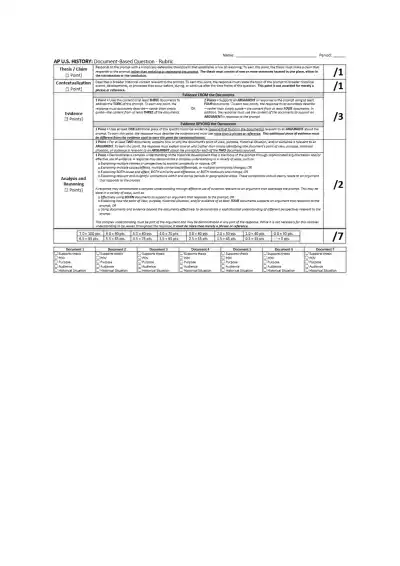Page 1

Loading page ...
This is a scoring rubric for an AP U.S. History Document-Based Question (DBQ). It outlines how points are awarded for thesis, contextualization, analysis. Designed to assess historical thinking and writing skills.

Loading page ...
This document has 2 pages. Sign in to access the full document!